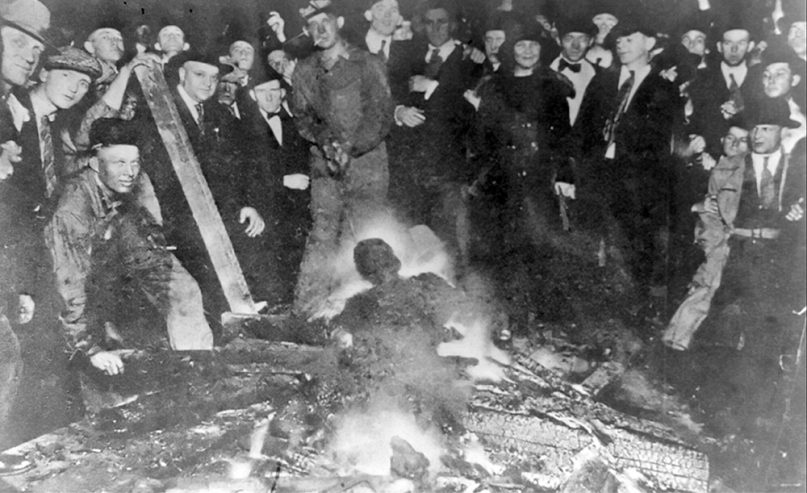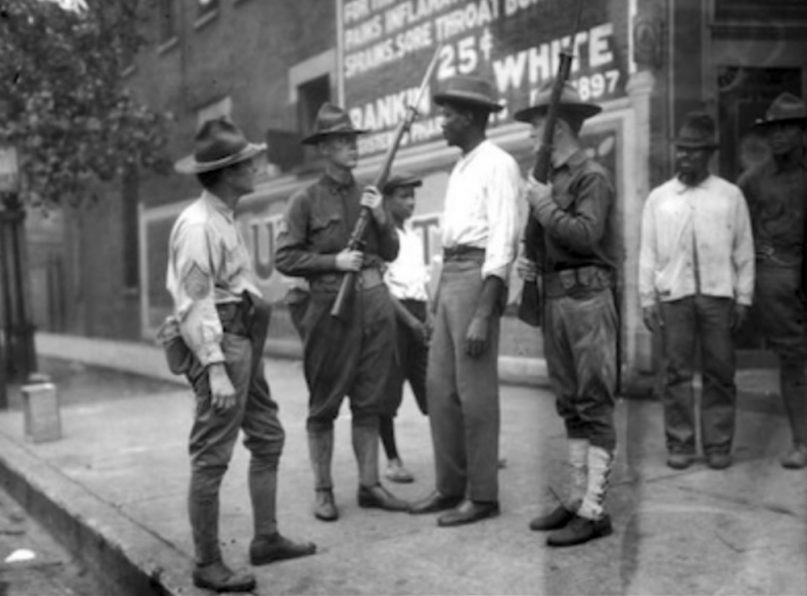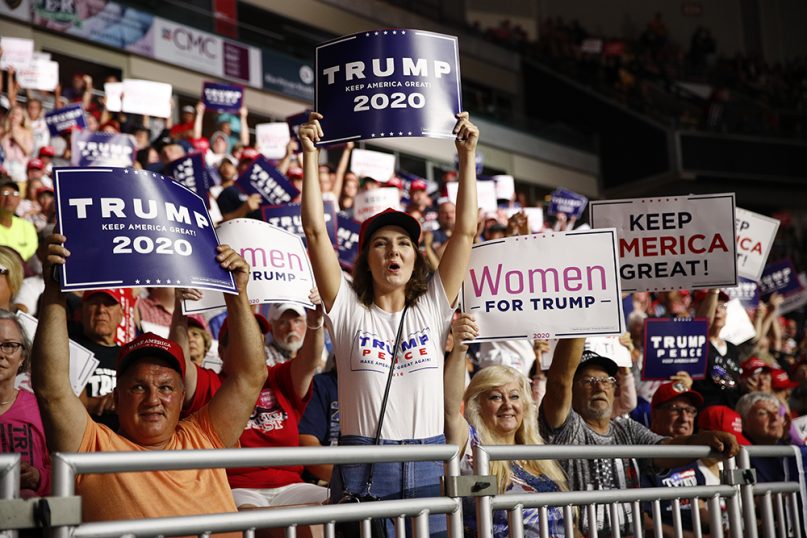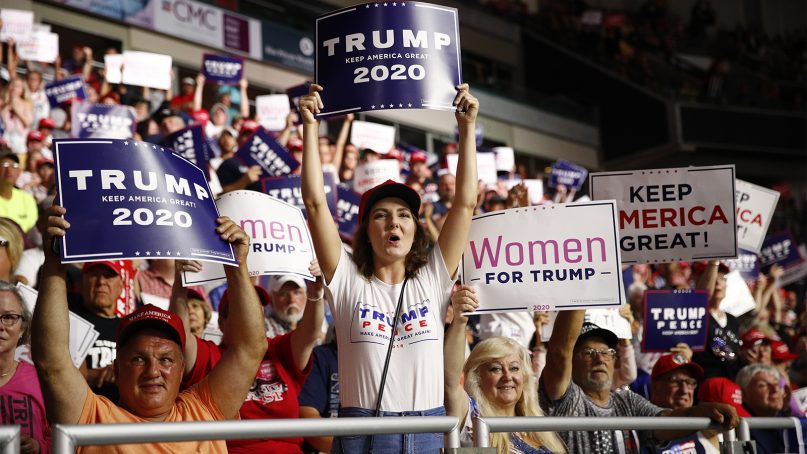
The charred corpse of William Brown after being killed, mutilated and burned by a white crowd in Omaha, Neb., on Sept. 28, 1919. Photo courtesy of LOC/Creative Commons
(RNS) — One hundred years ago this summer, white Americans violently, industriously, energetically and viciously killed black people in lynchings, riots and well-organized mass murders. “Because it was so bloody,” Wall Street Journal reporter Cameron McWhirter wrote in his book “Red Summer: The Summer of 1919 and the Awakening of Black America,” NAACP field secretary “James Weldon Johnson … called this season the Red Summer.”
Making sure that blacks returning from service in World War I also returned to racial subjugation, lynch mobs targeted decorated veterans. False accusations of rape prompted lynchings, especially of landowning African Americans and political activists. Hostile white “rioters” attacked black settlements and neighborhoods, often destroying and expelling entire communities.
Unlike masked Klansmen, also active at this time, these killers engaged in open violence with the cooperation and participation of law enforcement. They publicized the times and places it would occur and drew thousands of white onlookers, including children and women with babies. Photographers took pictures of smiling crowds standing beside bullet-riddled, mutilated, tortured, dismembered, charred bodies and destroyed homes. These horrid scenes were published in newspapers and magazines and sent through the U.S. mail.
RELATED: Montgomery’s 200-year history of slavery and civil rights
This violence was not new. Calling it “redemption,” white terrorism ended Reconstruction, imposed a slave-like system of exploitation, expelled black politicians and voters from civic life and established segregation, enforcing an elaborate system of law and customs called “Jim Crow.”

Three armed white men surround and question an unarmed black man in Washington, DC, on July 21, 1919. Photo courtesy of Creative Commons
President Woodrow Wilson screened the Ku Klux Klan apologia “Birth of a Nation” in the White House, labeling it “history written with lightning.”
This season of terrorism pushed black people out of the South in “the Great Migration.”
A hundred years is not so long in human lives. My parents were born during that Red Summer, and I have received invitations recently to three centennial birthday parties.
My great-grandparents and great-great-grandparents were all born in slavery. As a child in Georgia, my great-aunt witnessed a lynching.
Living memories of terror and exclusion within my family became personal, cultural and social capital, enabling and motivating my parents to resist discrimination and to provide the spiritual and intellectual armament that prepared me to resist and stand strong against the assaults, discrimination and name-calling I experienced in my lifetime.
As an African American clergywoman and sociologist, I know both first-hand. My professional experience has also acquainted me with the blazing, white blood-thirst that has defined North America for at least 400 years.

Supporters rally as President Donald Trump speaks at a campaign rally Aug. 15, 2019, in Manchester, N.H. (AP Photo/Patrick Semansky)
That Red Summer seems to have been a prelude to this Trump Summer of 2019. Shouting “send her back,” Trump’s supporters sounded like the heirs of those 1919 killers as they assaulted the citizenship of four congresswomen of color, exposing them to unprecedented threats of violence.
At least three “mass shooters” have echoed Trump’s talk of an immigrant “invasion.” A century after the Red Summer, Trump supporters appear to be celebrating a centennial summer of hate.
Trump’s racist rhetoric and lack of empathy have bolstered his support among voters best described by sociologist Gary Alan Fine’s term “tiny publics” — key segments dispersed throughout the American polity who have been identified and targeted through micro-polling to receive Trump’s racist, xenophobic and false tweets and speeches, knowing that they will be mobilized to elect him president without the popular vote.
Concentrated in states and counties that excluded black people and other peoples of color — former “sundown towns” or exclusionary white ghettoes, Trump’s tiny publics include “white evangelicals” in the historically pro-slavery and pro-segregationist divisions of American Protestantism. Their children attend “Christian” schools and Baptist academies founded to resist de-segregation.
Americans are still in denial about the centrality of “race” and the power of bigots. Bigots still go to church, share neighborhood barbecues, attend state fairs and frequent gun shows. Alienated and disconnected bigots “bowling alone” on the Internet become, as Dylann Roof and the El Paso and Dayton shooters have shown us, particularly deadly “lynch mobs of one,” to borrow Ibram X. Kendi’s helpful term. Trump and his minions know precisely what they are doing.
Like most Americans, I believed “racial progress” was stronger than Trump’s politics of hate. However, before calling Elizabeth Warren “Pocahontas,” Trump battled casino-building Native Americans with demeaning, belittling, denigrating and racist rants against their treaty rights.
His racism has long been apparent. Trump purchased full-page newspaper ads to urge killing the Central Park Five. His birther rants — largely ignored by journalists and politicians — contradicted President Obama’s mother’s U.S. birth, citizenship and 17th-century Virginia blood line. Had President Obama been born on Mount Kenya, he would still be a natural-born American citizen with an American heritage deeper than Trump’s.
Yet his racism is not “un-American,” as some have said. Calling Trump “un-American” reflects an ignorance of the violent forces — conquest, enslavement, annexation and immigration — that made America.
A century after one of the bloodiest seasons of white nationalism, racism and immigrant exclusion effectively closed American society to black, brown, Asian and dark-haired (“swarthy”) Europeans, we must persist in re-making and repairing what Gary Alan Fine calls “the micro-foundations of civil society” so that an opposing set of tiny publics — of justice, equity and anti-racism — can confront and oppose the politics of hate during and beyond this long Trump summer.
(Cheryl Townsend Gilkes is an assistant pastor for special projects at Union Baptist Church in Cambridge, Massachusetts, and the John D. and Catherine T. MacArthur Professor of African American Studies and Sociology at Colby College in Waterville, Maine. The views expressed in this commentary do not necessarily represent those of Religion News Service.)





